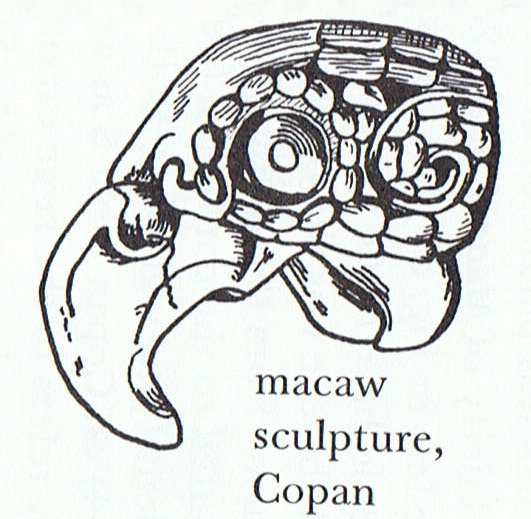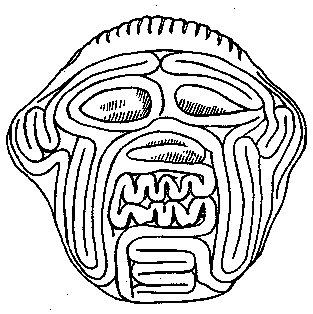The Explorers reached Easter Island (made landfall) in "June 1: ... On the twenty-fifth day [raa] of the first month ('Vaitu Nui'), Ira and Makoi set sail. (i te rua te angahuru marima raa o te vaitu nui.i oho.mai ai a ira.ko Makoi) ... on the first day [te raa po rae] of the month of June ('Maro'), the bow [te ihu] of Ira's canoe touched land again ... [E:17] ... During his descent the ancestor still possessed the quality of a water spirit, and his body, though preserving its human appearance, owing to its being that of a regenerated man, was equipped with four flexible limbs like serpents after the pattern of the arms of the Great Nummo. The ground was rapidly approaching. The ancestor was still standing, his arms in front of him and the hammer and anvil hanging across his limbs. The shock of his final impact on the earth when he came to the end of the rainbow, scattered in a cloud of dust the animals, vegetables and men disposed on the steps. When calm was restored, the smith was still on the roof, standing erect facing towards the north, his tools still in the same position. But in the shock of landing the hammer and the anvil had broken his arms and legs at the level of elbows and knees, which he did not have before. He thus acquired the joints proper to the new human form, which was to spread over the earth and to devote itself to toil ... ... 'The life-force of the earth is water. God moulded the earth with water. Blood too he made out of water. Even in a stone there is this force, for there is moisture in everything. But if Nummo is water, it also produces copper. When the sky is overcast, the sun's rays may be seen materializing on the misty horizon. These rays, excreted by the spirits, are of copper and are light. They are water too, because they uphold the earth's moisture as it rises. The Pair excrete light, because they are also light ... 'The sun's rays,' he went on, 'are fire and the Nummo's excrement. It is the rays which give the sun its strength. It is the Nummo who gives life to this star, for the sun is in some sort a star.' It was difficult to get him to explain what he meant by this obscure statement. The Nazarene made more than one fruitless effort to understand this part of the cosmogony; he could not discover any chink or crack through which to apprehend its meaning. He was moreover confronted with identifications which no European, that is, no average rational European, could admit. He felt himself humiliated, though not disagreeably so, at finding that his informant regarded fire and water as complementary, and not as opposites. The rays of light and heat draw the water up, and also cause it to descend again in the form of rain. That is all to the good. The movement created by this coming and going is a good thing. By means of the rays the Nummo draws out, and gives back the life-force. This movement indeed makes life. The old man realized that he was now at a critical point. If the Nazarene did not understand this business of coming and going, he would not understand anything else. He wanted to say that what made life was not so much force as the movement of forces. He reverted to the idea of a universal shuttle service. 'The rays drink up the little waters of the earth, the shallow pools, making them rise, and then descend again in rain.' Then, leaving aside the question of water, he summed up his argument: 'To draw up and then return what one had drawn - that is the life of the world.'
... It should be stated right now that 'fire' is actually a great circle reaching from the North Pole of the celestial sphere to its South Pole ...
We can correlate the days of the Explorers with heliacal stars, and half a year later (292 / 2 = 2 * 73 = 146) when the Explorers left Easter Island the star Elephant Goad (Sabik, η Scorpii) rose with the Sun:
So far so good. Then we ought to count another cycle of 115 days from Cursa:
Significantly this synodic cycle of Mercury ended at Porrima (γ Virginis), the place which marked day 150 counted from Bharani: ... I once upon a time discovered the key role played by Bharani from studying the manazil structure of the Arabs. This was my perception of the 1st half of the year (before Spica and Heze arrived at the beginning of the 2nd half):
In the Babylonian zodiac the sign of Mercury was placed between the pair of Virgo ladies (Furrow and Frond) - i.e. those who were visible close to the Full Moon together with Mercury (Nabū) at spring equinox:
... Ganz ähnlich is der Name 'Gott von Duazag' des Gottes Nabū ... zu erklären. Er bezeichnet ihn als den Gott des Wachtstums, welches als aus dem Osten stammend betrachtet wird, weil die Sonne, die das Wachstum bringt, im Osten aufgeht. Dass aber Nabū als Ost-Gott aufgefasst wurde, hängt damit zusammen, dass sein Stern, der Mercur, nur im Osten oder Westen sichtbar ist ...
... Now Agastya, the great Rishi, had a 'sordid' origin similar to that of Erichtonios (Auriga), who was born of Gaia, 'the Earth', from the seed of Hephaistos, who had dropped it while he was looking at Athena¹. ¹ Besides Greece and India, the motif of the dropped seed occurs in Caucasian myths, particularly those which deal with the hero Soszryko. The 'Earth' is replaced by a stone, Hephaistos by a shepherd, and Athena by the 'beautiful Satana', who watches carefully the pregnant stone and who, when the time comes, calls in the blacksmith who serves as midwife to the 'stone-born' hero whose body is blue shining steel from head to foot, except the knees (or the hips) which are damaged by the pliers of the smith. The same Soszryko seduces a hostile giant to measure the depth of the sea in the same manner as Michael or Elias causes the devil to dive, making the sea freeze in the meantime. In the case of the Rishi: He originated from the seed of Mitra and Varuna, which they dropped into a water-jar on seeing the heavenly Urvashi. From this double parentage he is called Maitrāvaruni, and from his being born from a jar he got the name Khumbasambhaya¹ (Khumba is the name of Aquarius in India and Indonesia, allegedly late Greek influence.) ¹ ... let us mention that the Egyptian Canopus is himself a jar-god; actually, he is represented by a Greek hydria ... On the very same time and occasion there also was 'born' as son of Mitra and Varuna - only the seed fell on the ground not in the jar - the Rishi Vasishta. This is unmistakably zeta Ursae Majoris, and the lining up of Canopus with zeta, more often with Alcor, the tiny star near zeta (Tom Thumb, in Babylonia the 'fox'-star) has remained a rather constant feature, in Arabic Suhayl and as-Sura. This is the 'birth' of the valid representatives of both the poles, the sons of Mitra and Varuna and also of their successors ...
|
||||||||||||||||||||||||||||||||||||||||||||||||||||||||||||||||||||||||||||||||||||||||||||||||||||||||||||||||||||||||||||||||||||||||||||||||||||||||||||||||||||||
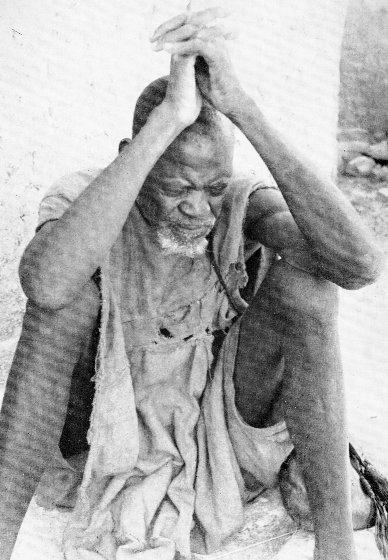
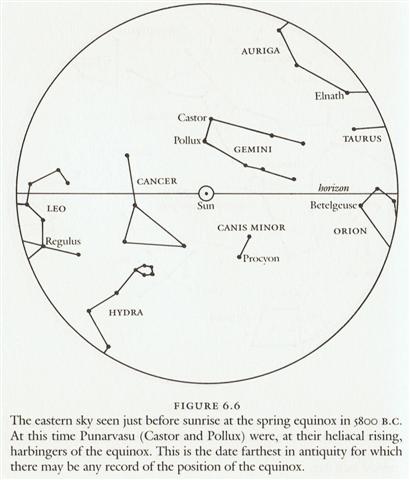

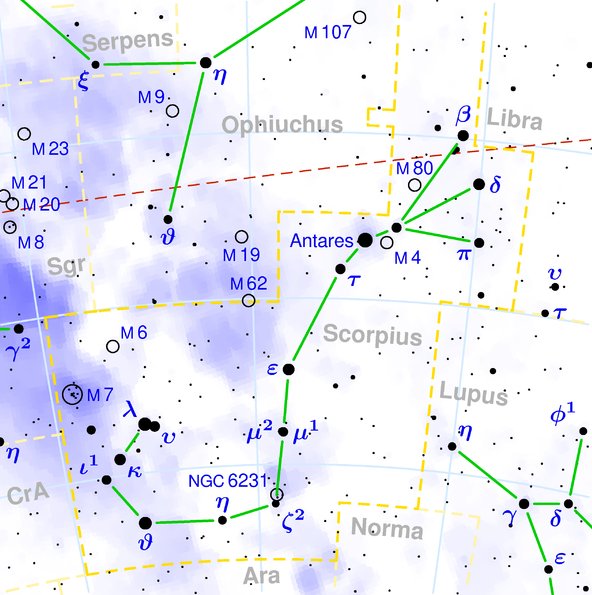
.jpg)
